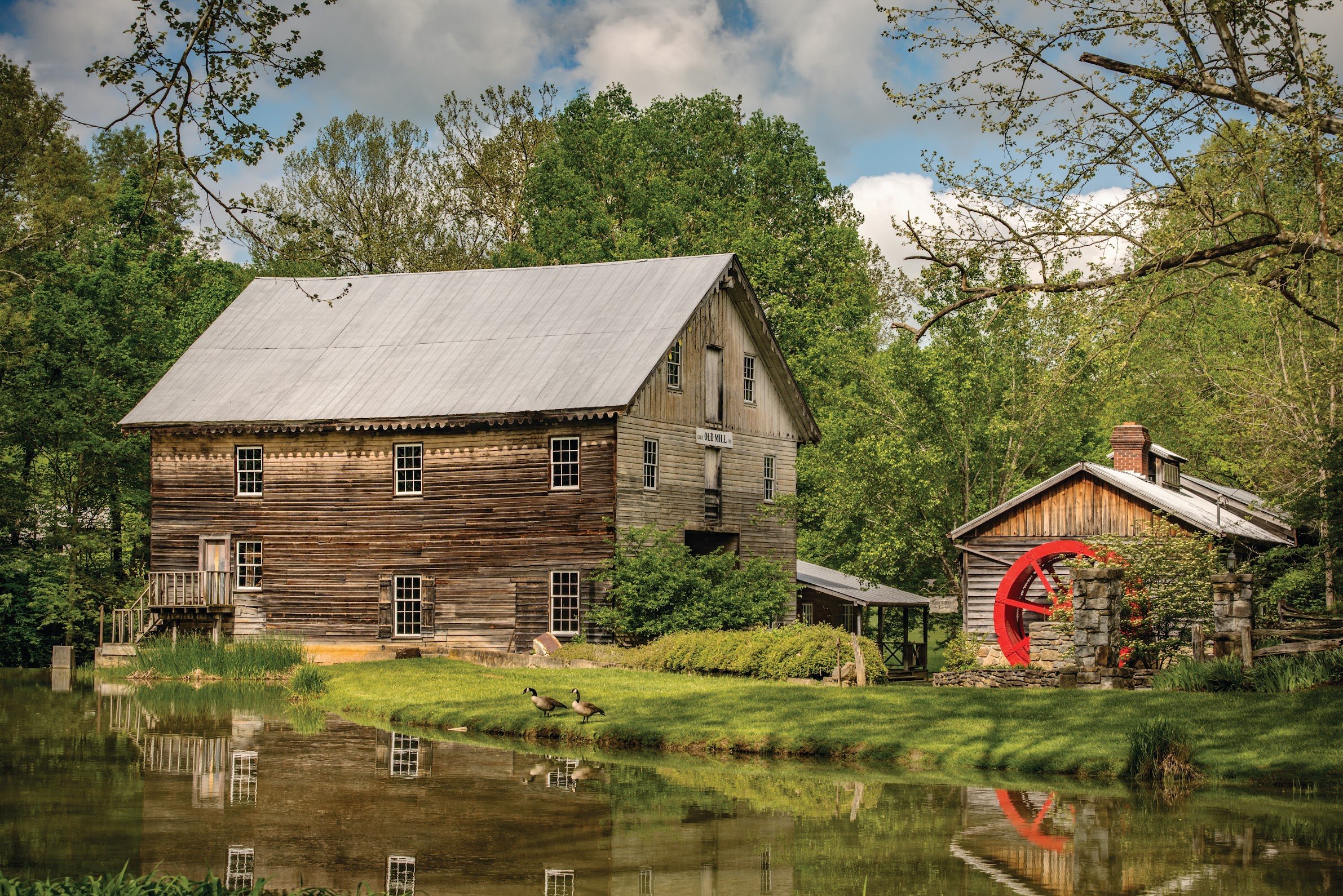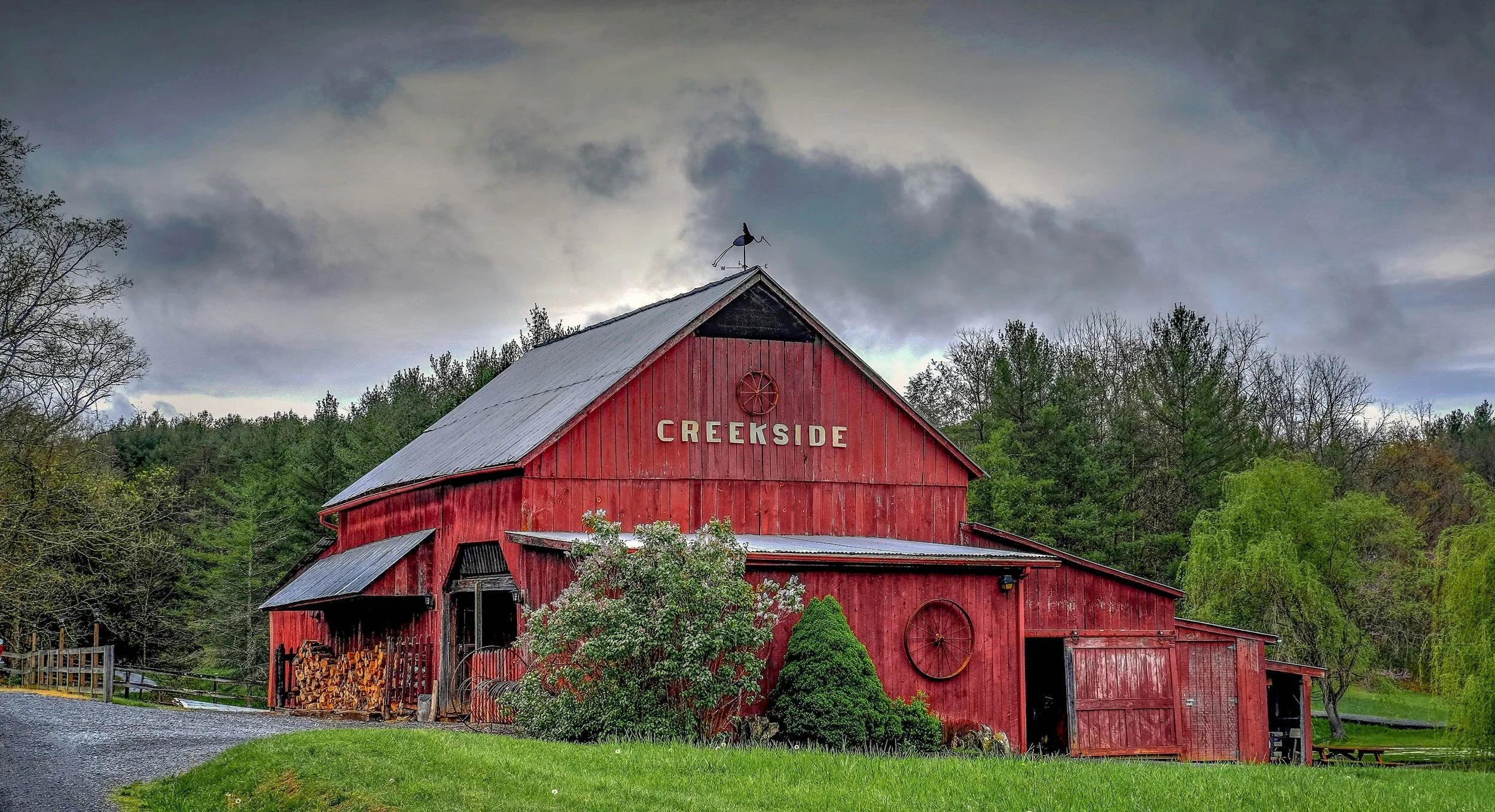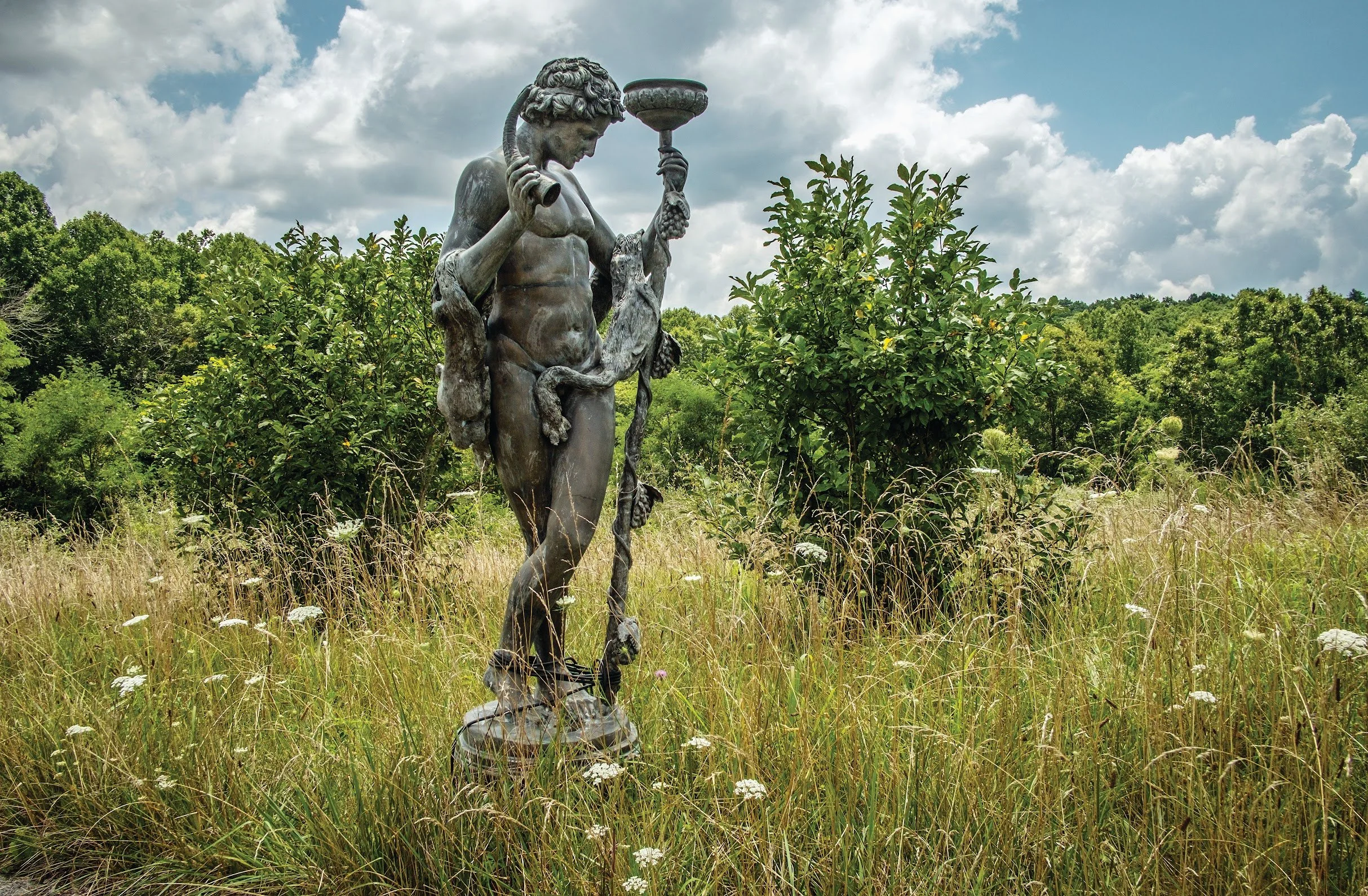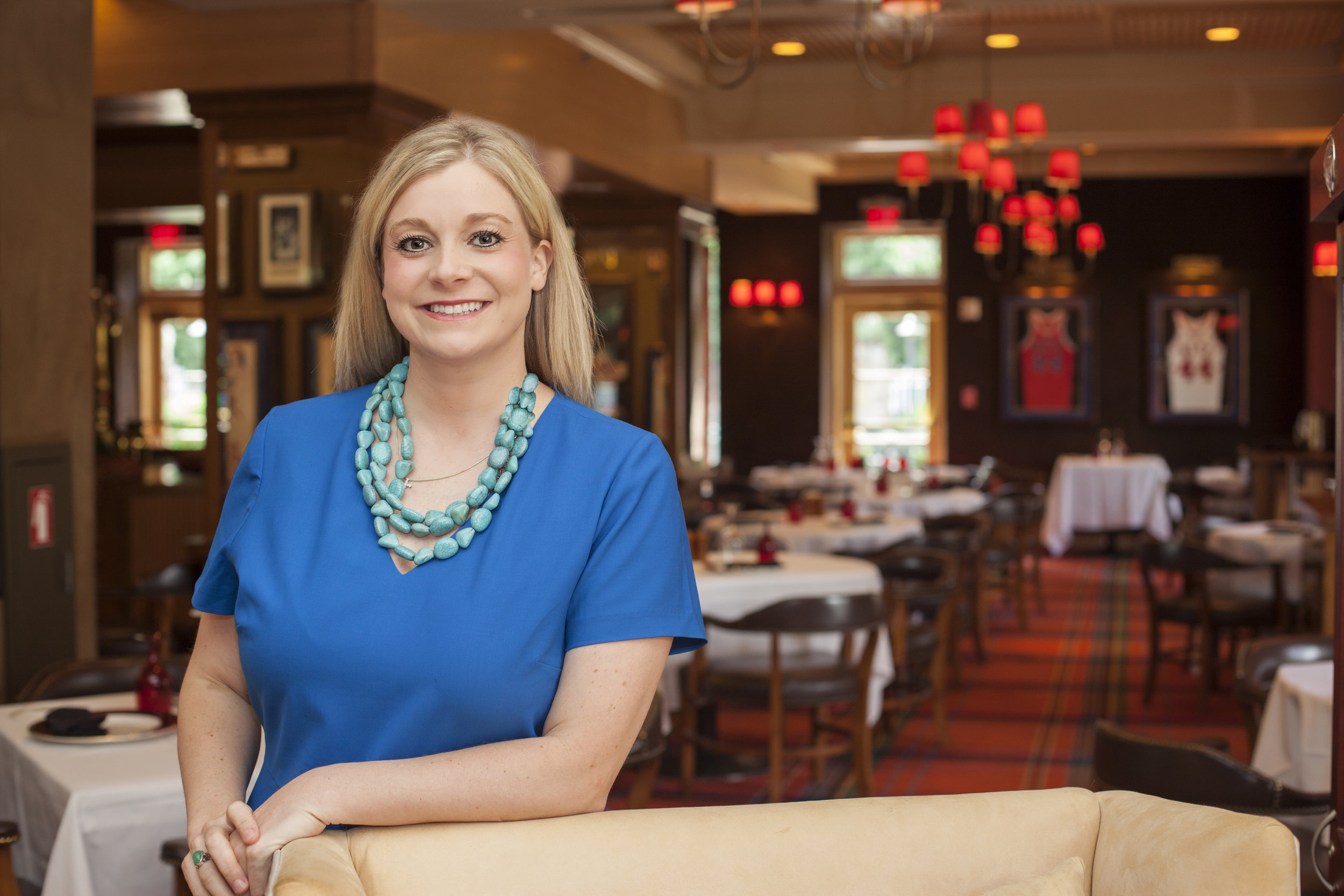Driving Backroads

Interview by Josh Baldwin
It’s hard to stumble around on social media in the Greenbrier Valley and not come across the ever-popular page Driving Backroads. With over 25,000 followers, the page has become a huge hit for many area residents. The photography’s signature blue skies, dramatic clouds, and historic structures bring about a sense of both nostalgia for a time passed, as well as a sense of pride and belonging for those of us that call the Greenbrier Valley home.
Greenbrier Valley Quarterly’s Josh Baldwin caught up with the photographer behind Driving Backroads, Bob Bell, and talked about his work, moving to Monroe County, and the philosophy behind his arresting photographs.
GVQ: I gather from your blogs that you are originally from Kentucky. Tell us a little about where you grew up and how it shaped you.
BELL: I grew up on a farm in rural western Kentucky, where my family raised livestock and row crops. So, I grew up on a farm caring for and feeding cattle, horses, and other assorted farm animals, which occasionally included a goat or pig…or two. The family worked together to put out a couple hundred acres of corn and soybeans each year. By today’s standards it was a small operation. We had a couple of small, open-cab tractors which were big enough to pull plows, disk and planters. In the fall, we gathered the crops with an old combine, which had interchangeable headers for corn or beans. In my spare time, especially after a rain, I would walk those fields looking for arrowheads and artifacts left behind by the native population years ago. I continued to work on the farm through college, driving back and forth, until I graduated in 1980 with a master’s degree in communications, and bachelor’s degrees in radio-TV and anthropology.
GVQ: What kind of work did you do after college?
BELL: My first job out of college was supervising an archaeology field school, for the University of Louisville, on a Late Woodland Period Native American site, near Henderson Kentucky. In the following years, I worked doing a number of things, from reporting and photography at a couple of small-town newspapers, to video production and management for a couple of outdoor hunting and fishing television shows. In 1984, I joined the Peace Corps and spent a couple of years in the Caribbean doing archaeology for the Montserrat National Trust. In that time, I found and reported on a number of prehistoric sites and wrote a grant proposal that allowed for the reconstruction of an 18th-century British gun battery at Carr’s Bay. This led to doing Cultural Resource Management archaeology work across parts of the South and Midwest—finding, reporting, and working on sites of cultural significance along highways, pipelines, and other construction work.
While I had become proficient with a film camera and developing film in my college years, I bought my first digital DSLR camera, while working on an electric transmission line project in West Virginia. Using principles of film photography, I taught myself to use the digital camera and process the images using computer software. The right-of-way work allowed me to travel extensively, and with a strong interest in history and historic preservation, I snapped images of historic and abandoned structures wherever I went. At this point, I was, more or less, just recording old buildings, many in advanced states of decay, before they disappeared forever.
In January 2017, I got transferred to Monroe County, WV. Actually, most of my work was in Monroe, Summers, and Greenbrier Counties. During this period, I became familiar with the area’s history and noticed the many historic old homes, churches, and farms scattered across the landscape. It was impossible not to notice the beautiful, mountainous views that defined the area. I decided to buy a professional, full-frame DSLR that would allow me to capture my surroundings as higher quality images. Soon after arriving in Monroe County, I rented a house, and my wife, Debra, and two dogs, Daisy and Dolly, a pug and French bulldog, joined me. While my work allowed me to drive and explore the backroads of the area, during my own spare time, we would load up the truck, and the four of us would go exploring, learning about the area, and photographing the many historic structures of the area.
GVQ: And you eventually settled here, right?
BELL: Yeah, five years later we were still in Monroe County, which had become a second home for us. We were still renting and decided it was time to look for property to buy. Last year we found a home outside of Union, for sale on the internet and bought it sight unseen. It needs some work, and we’re still not moved in full-time. We had just gotten there and started work when I got a call asking if I would consider helping on a fiber optic project in rural southern Illinois, near our Kentucky home. We decided to give it a few months. So, we will return to Monroe County before the end of the year, where I’ll devote my time to working on our place, driving West Virginia back roads, and doing more fine art photography.
Debra Bell, Bob’s wife, makes life-like “reborn” dolls in her workshop
GVQ: How did you first get into photography?
BELL: While in college, I bought a 35mm film camera. It was a Pentax K1000, which is totally manual, with no automatic settings. It’s the perfect camera to learn photography, as it allows the photographer to decide what settings are best in a particular situation. I took some journalism courses and learned to develop and print B&W film. I also worked for a couple of newspapers and carried a camera with me everywhere I went, as one never knows when they will come across a newsworthy, or feature-type subject. I’m a huge fan of good photojournalism and documentary photography.
GVQ: What is your approach to photography?
BELL: Over the last several years, almost all of my photography has been images of old and historic structures or landscapes, taken along the back roads of America. While I occasionally still shoot film, most of my photos are taken with a Nikon these days, shooting in RAW. Shooting this way allows me to edit the photos and have more control of how the final image will look. Overall, shooting RAW gives me control of exposure, color and saturation, highlight and shadow density, sharpness, and all the other qualities inherent in a photo. I choose Adobe Lightroom and Photoshop to edit my images, simply because they are the programs that I taught myself and know best.
GVQ: What draws you toward the theme of “Driving Backroads?”
BELL: I drive back roads almost on a daily basis, whether for work, or for fun. America’s hidden treasures, small towns, people, and historic places and structures are often found on back roads, which don’t see a lot of traffic. They have been bypassed by interstate highways and other improved roads. Back roads that I travel aren’t always ideal for passenger cars and are better suited for a 4x4, or at least a vehicle with decent road clearance. I often choose a road that I’ve never driven before, to simply see what is there. In southern WV, especially Monroe County, it’s difficult to drive down a backroad and not find something of interest to photograph, whether it be a church, historic or abandoned home, or mountain vista. Monroe County is rural. It has the distinction of not having any traffic lights, fast food restaurants, or big chain stores. But, it does have farms and small towns with friendly people. Cattle are more prevalent than people, and history is everywhere. The first time I drove through Sinks Grove, I was amazed to see Bob & Bob Speleo General Store International Headquarters. The now-defunct business was a world-leading supplier of caving gear only a few years ago, with a mail-order business. Union, the county seat, home to only a few hundred residents, has numerous historic homes and businesses, some dating to the 18th century, with some restored, and many others that could be returned to their former glory.
One of Many beautiful barns in Monroe County
GVQ: I noticed most of your work captures buildings/structures juxtaposed against pastoral scenes. Is there a theory behind your compositions?
BELL: I like images that tell a story. A structure’s environment is part of that story. I so often see photos of historic homes that are cropped tightly, and one has no idea if the building is in a city, small town, or out in the country. West Virginia offers wonderful, beautiful scenery. The buildings and structures that I photograph often have a background that is worthy of a photo by itself. I like to get out on days with big, fluffy clouds and make sure they are a part of the composition. I watch the weather and plan outings accordingly.
GVQ: There is a strong sense of nostalgia in your work. Could you expand on that?
BELL: I photograph old and historic structures, sometimes abandoned or in ruins. Sometimes my photos are all that will remain after the building is gone. My photos normally include old homes, schools, churches, country stores, or farm buildings. Many of the people viewing my work are older. They remember when these places were an important part of their life. They have fond memories of activities with their family and friends from years ago. I post a photo daily on my Driving Backroads Facebook page. It’s not unusual to have someone share a memory, or tell a story related to the picture. I often have people tell me the images bring a sense of security and tranquility—a feeling of a simpler time. Many areas across America have had most of their historic structures razed and paved over. Mobile homes have replaced family homes, and old farm buildings have been torn down and replaced by pole barns. Areas that still have parts of their history left need to cherish it, as it could someday be only a memory.
Statue along a Summers County backroad.
GVQ: What makes the Greenbrier Valley a popular place for you to photograph?
BELL: The Greenbrier Valley is an area rich in history and natural beauty. I was fortunate to have discovered it through work. We fell in love with the area and decided to make it our home.
GVQ: How can people follow your work and buy from you?
BELL: There are several ways to follow my work at Driving Backroads. I post to my Facebook page on a daily basis and welcome comments and suggestions. Often someone has an idea or a subject for a photo. I do my best to acknowledge or answer every post. I’ve also got an Instagram page, as well as a Flickr page. My photos are best viewed large, as there is often a lot of detail in them. That’s why I really like Flickr—because my photos can be viewed at full resolution. I also have a blog, DrivingBackRoads.com, with articles and photos relevant to driving the back roads of rural America.
I do custom printing and anyone wanting to purchase a fine art photo can message me through Facebook, or send me an email at bobg.bell@gmail.com.







